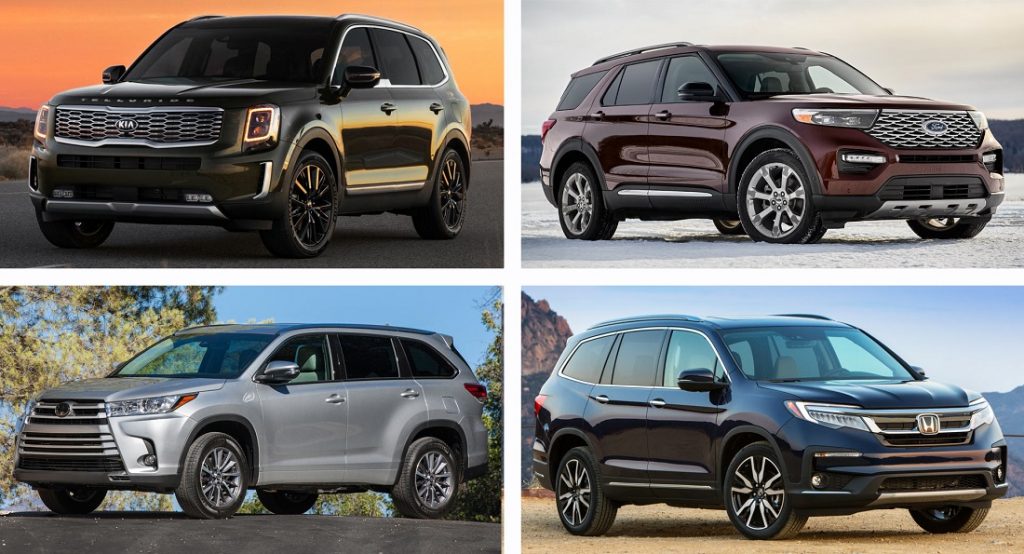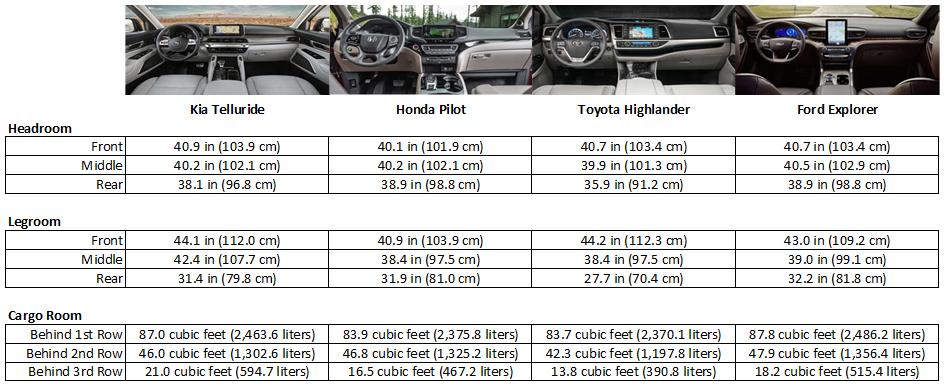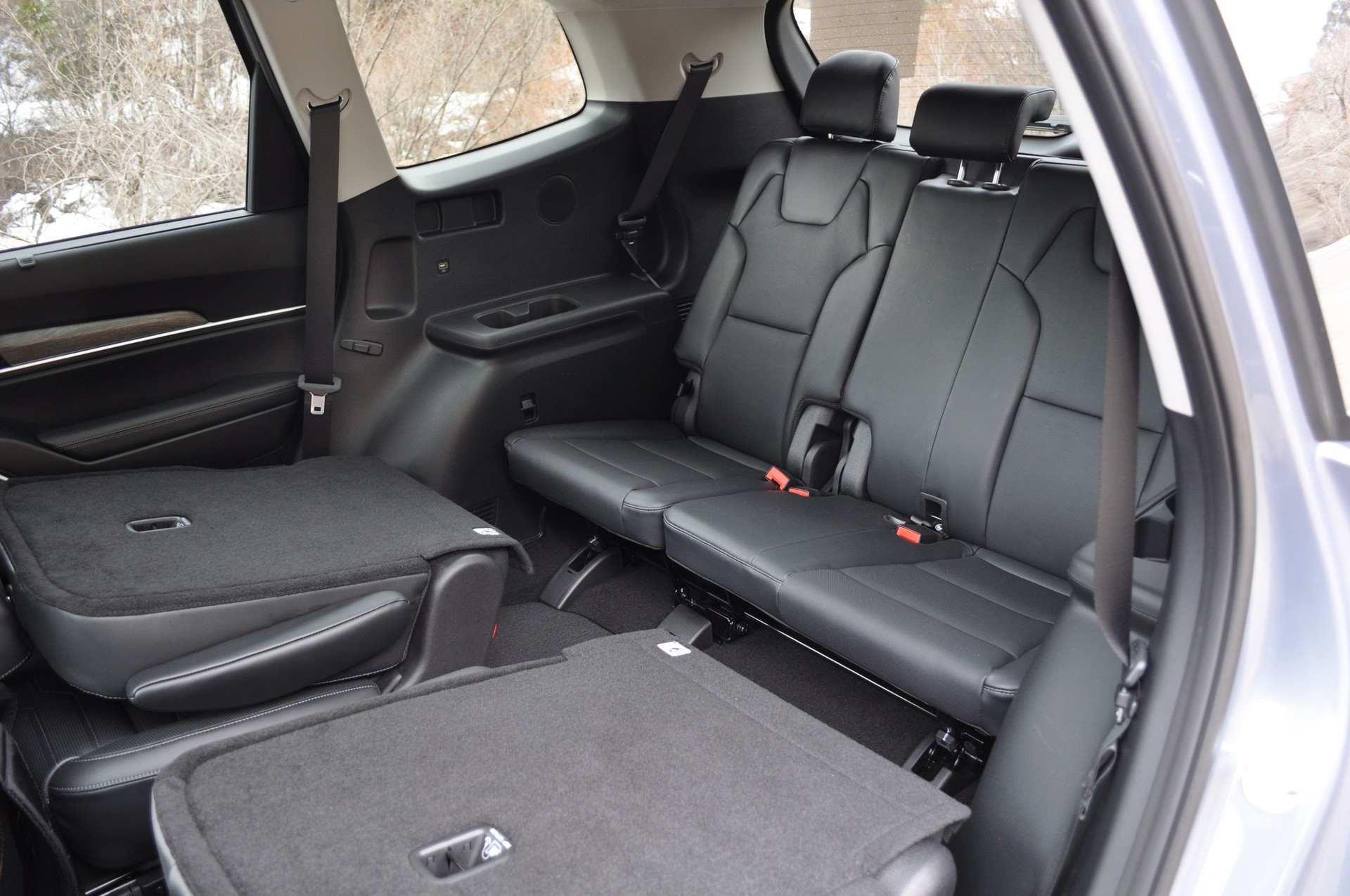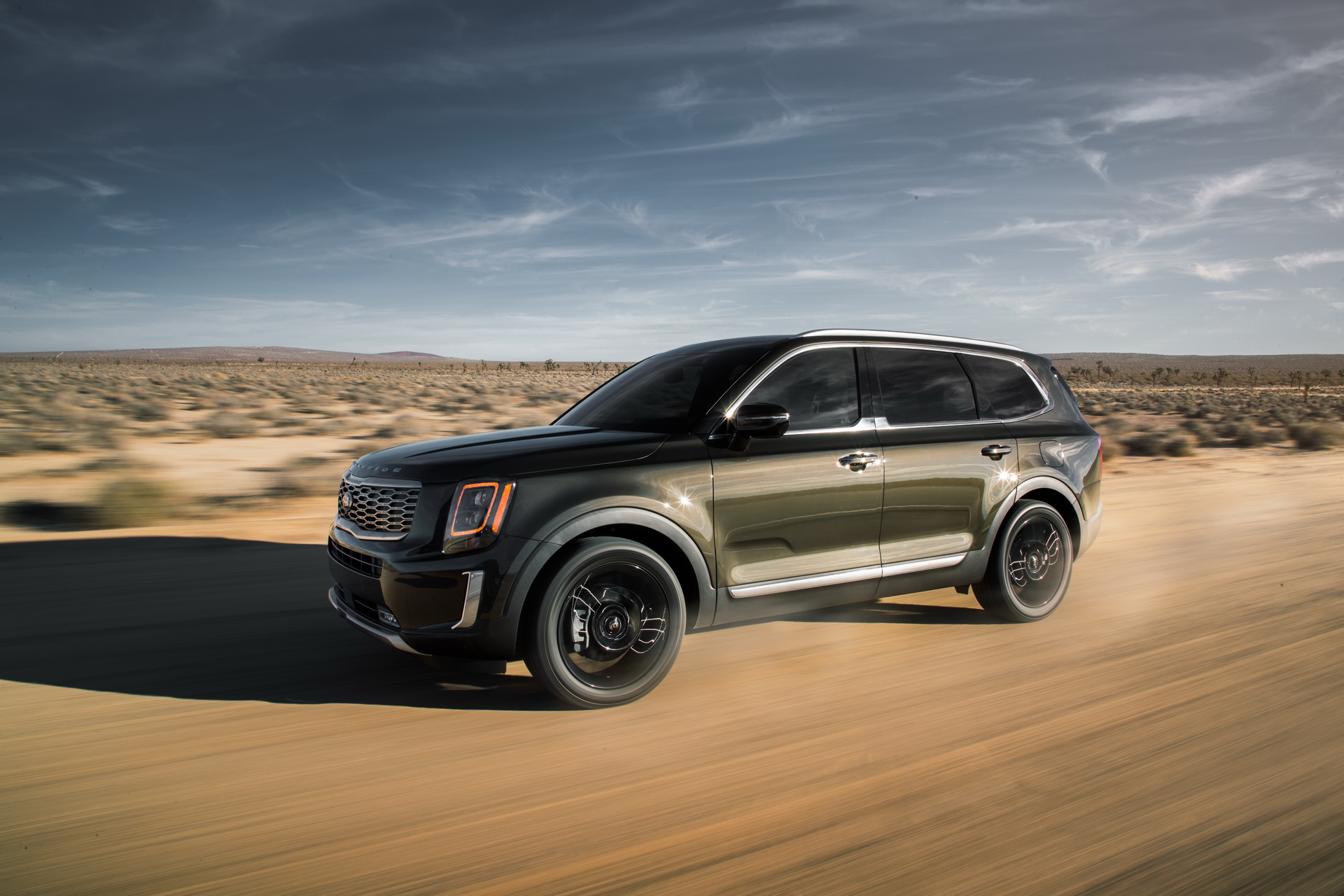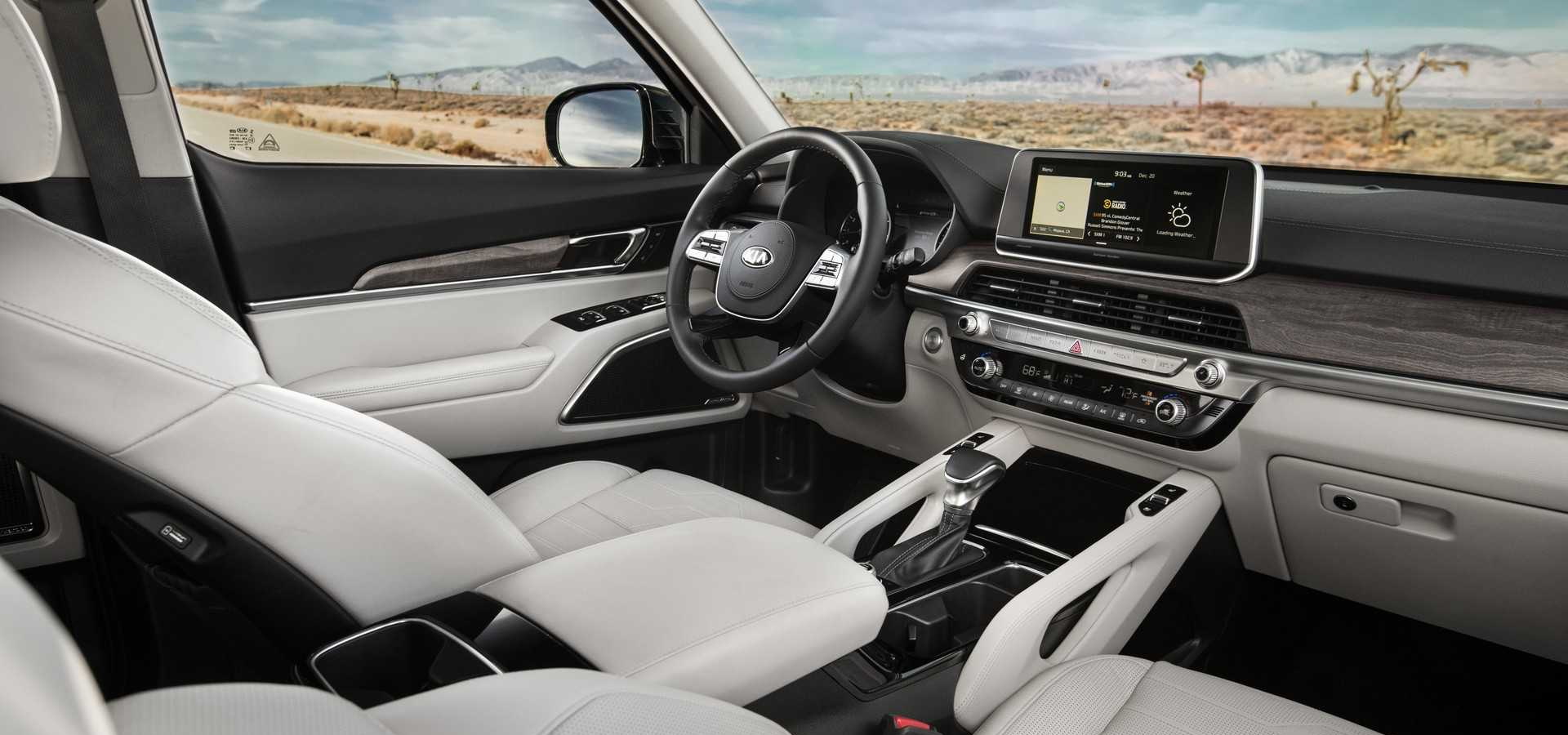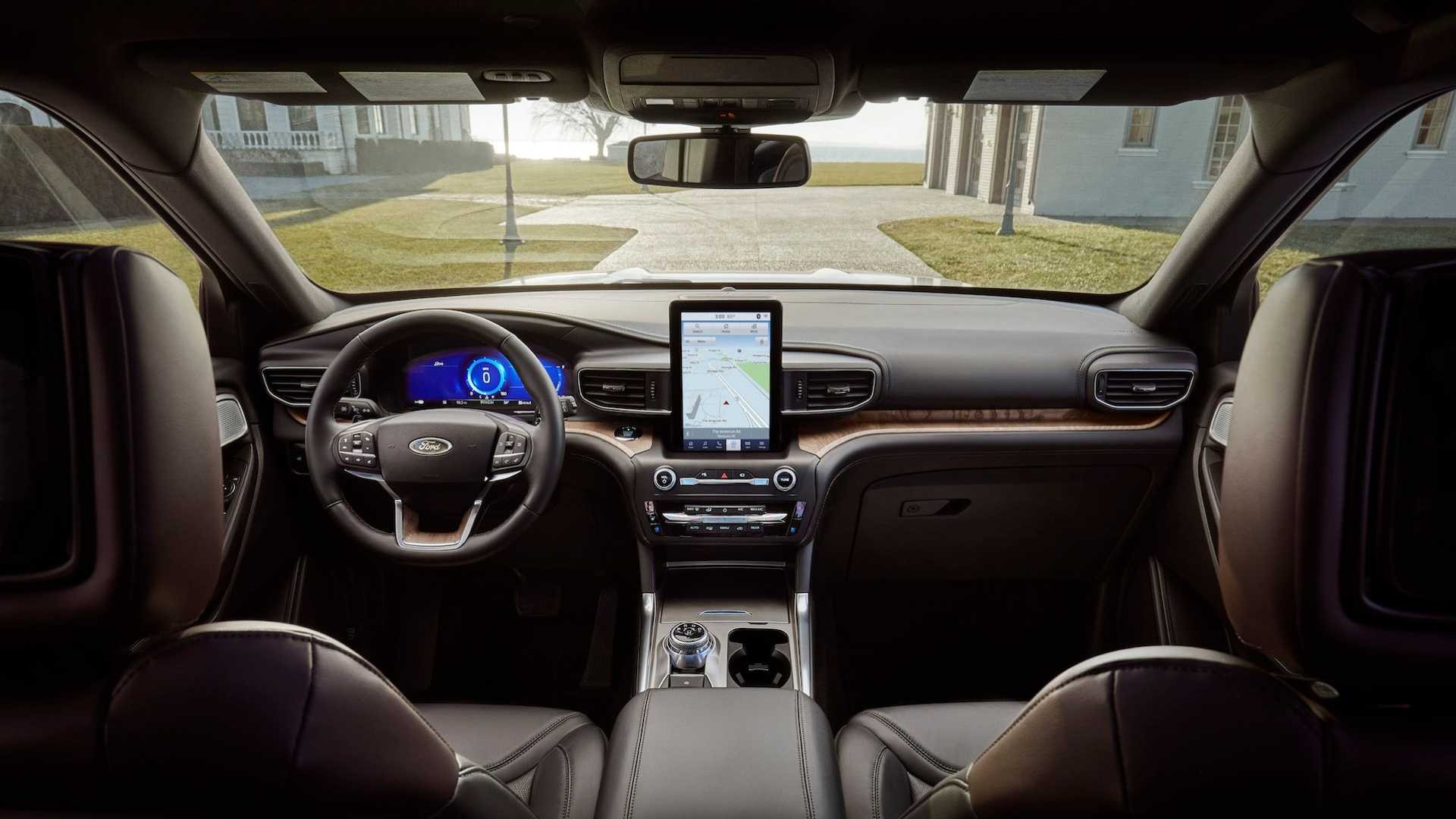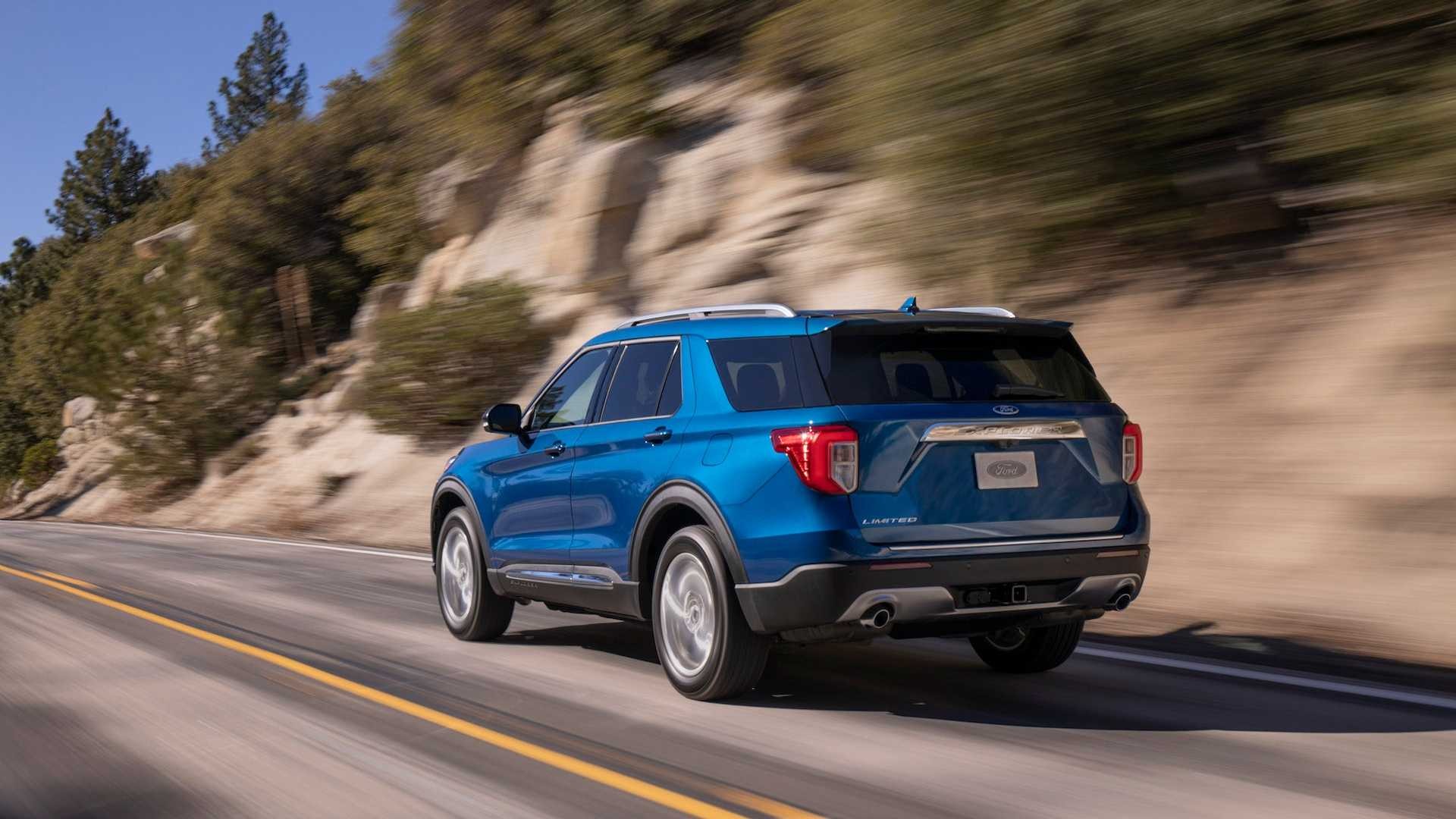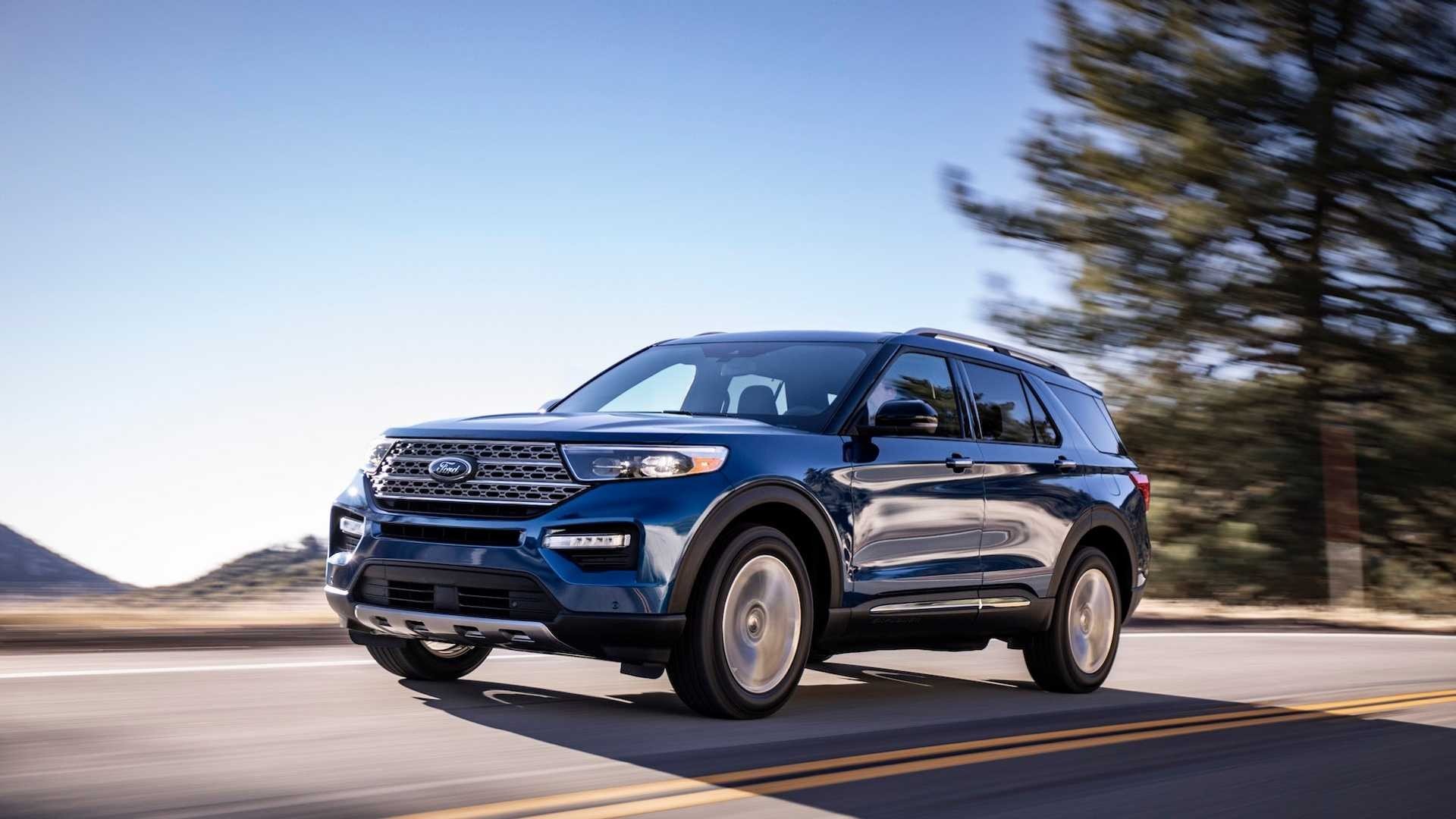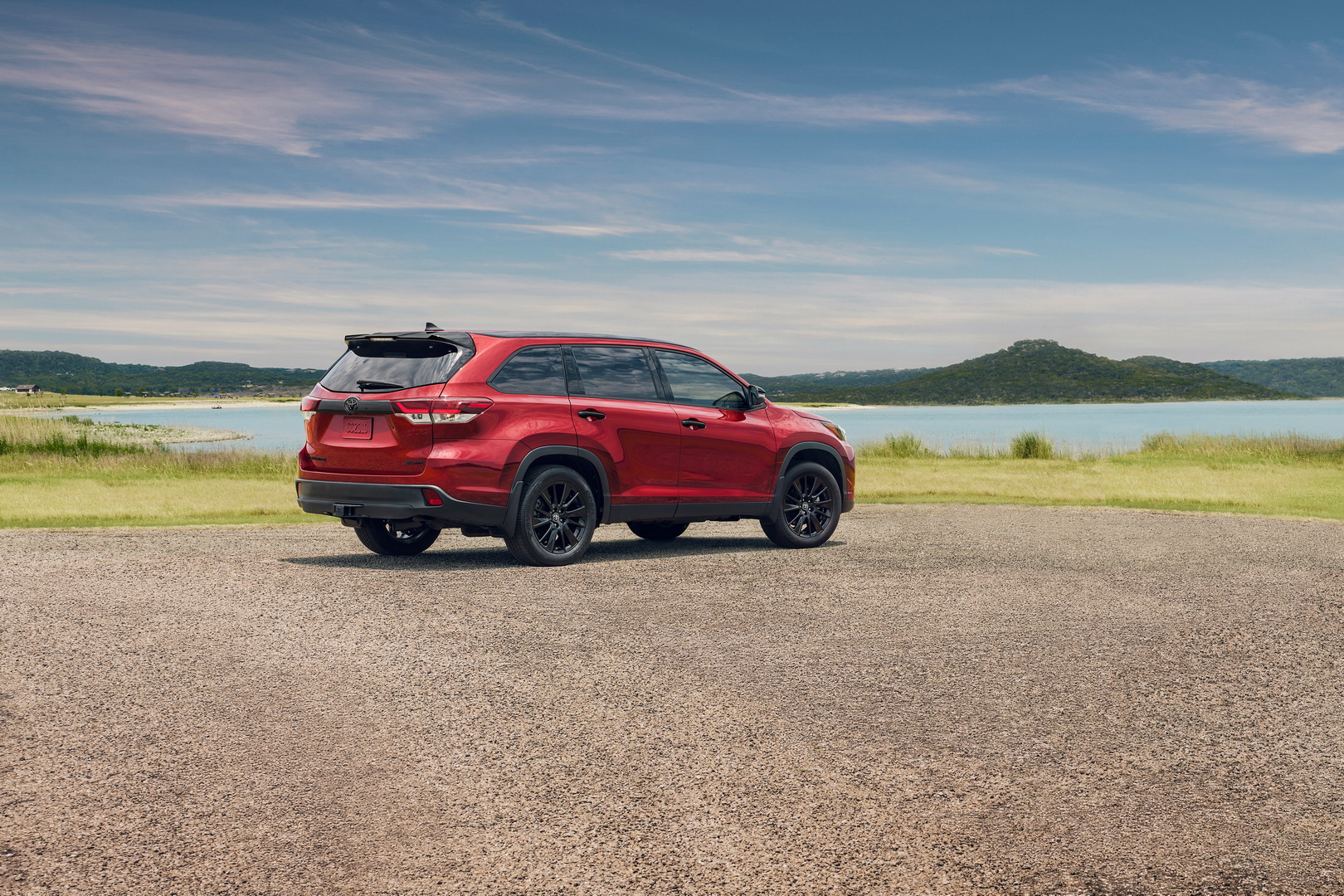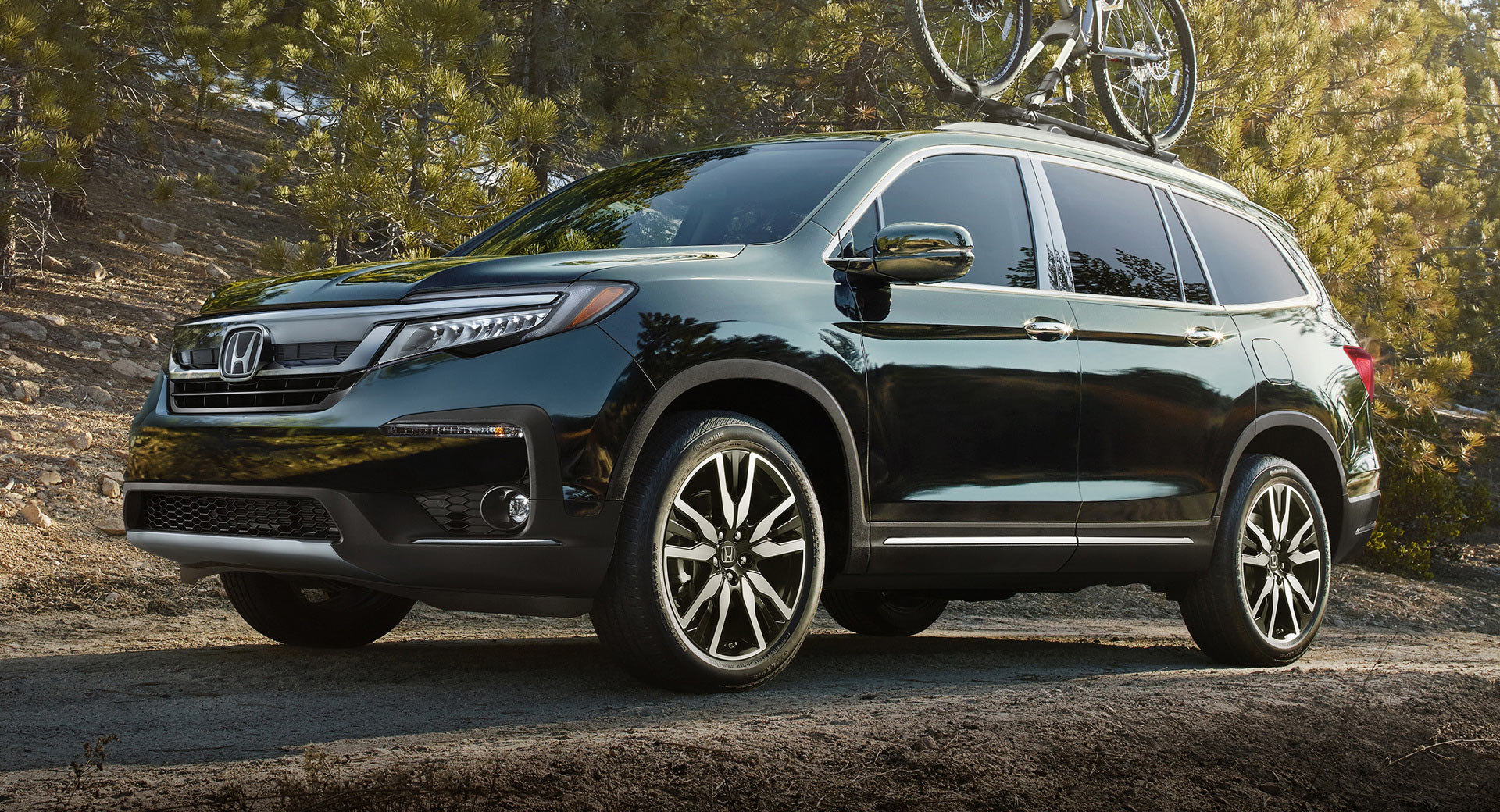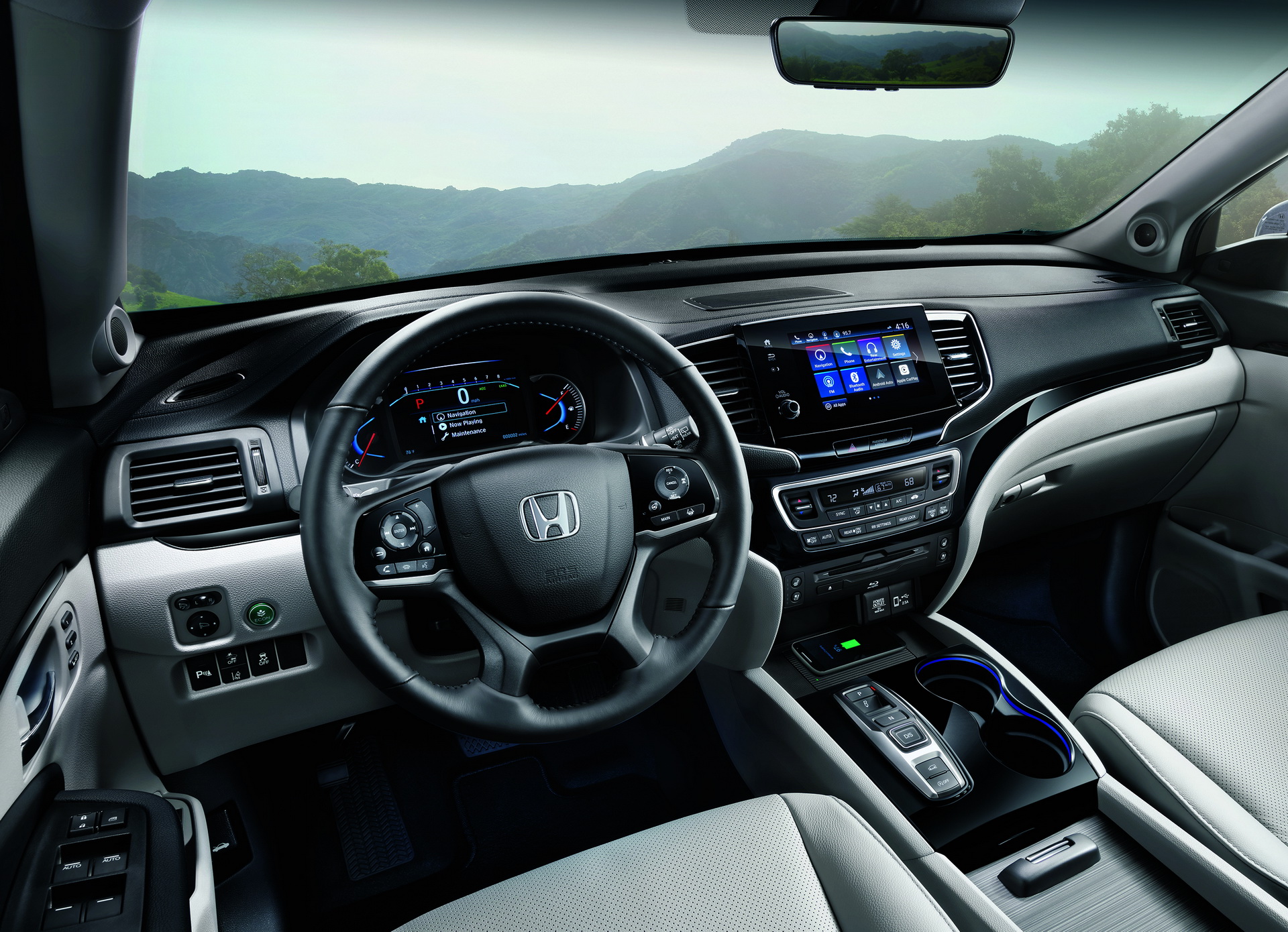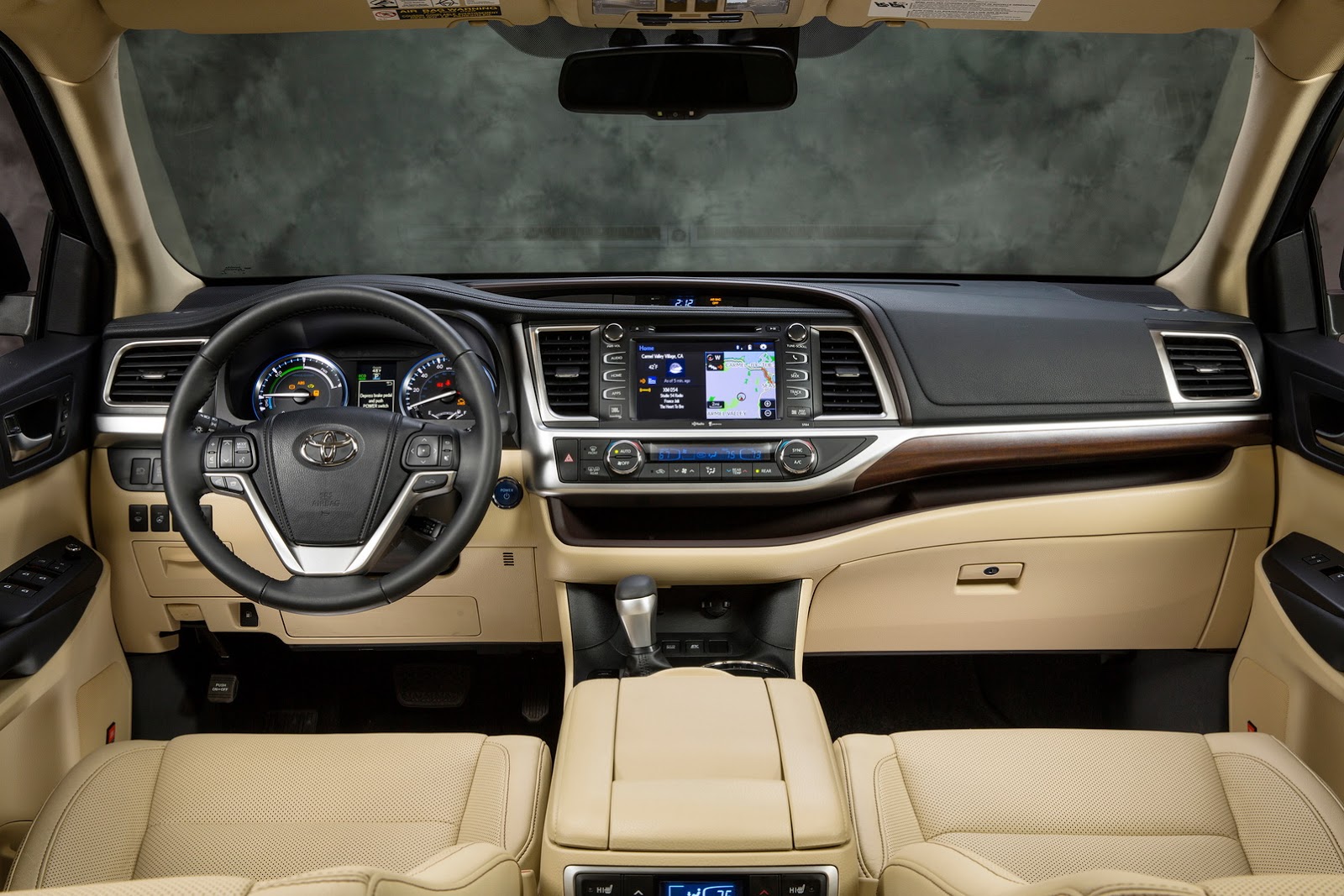We recently took a spin in the 2020 Kia Telluride and came away pretty impressed by the crossover’s combination of style, comfort and spaciousness.
The Telluride certainly has a lot going for it, but it’s far from the only family-friendly crossover on the market. In fact, Kia wants to challenge well established competitors such as the Ford Explorer, Honda Pilot and Toyota Highlander. Those are the segment heavyweights, so we decided to see how they all stack up.
Exterior Dimensions
Since all four crossovers are designed to accommodate seven to eight people, it’s not surprising to learn that they’re all pretty big. The 2020 Ford Explorer is the largest of the group as it measures 198.8 inches (504.9 cm) long and has a wheelbase of 119.1 inches (302.5 cm).
The Telluride and Pilot are pretty evenly matched in terms of exterior dimensions, but Kia’s crossover has a 3.2 inch (8.1 cm) longer wheelbase. The Highlander, on the other hand, is the little guy of the group as it trails the competition in all four categories.
Interior Dimensions
One of the most important things about family crossovers is interior space, as they’re designed to haul a lot of passengers and cargo. The results are all across the board.
Front seat passengers will probably like the Highlander the best, as it has the most legroom and the second most headroom. The Telluride has a bit less legroom, but a tad more headroom. The Explorer isn’t too far behind, while the Pilot is a distant fourth with just 40.9 inches (103.9 cm) of front seat legroom and 40.1 inches (101.9 cm) of headroom.
Moving to the second row, the Telluride is the clear winner, boasting 42.4 inches (107.7 cm) of legroom – or 3.4 inches (8.6 cm) more than the second-best in that area, the Explorer. The Pilot and Highlander both have 38.4 inches (97.5 cm) of legroom, but the Honda has more headroom.
Third row seats often feel like a prison sentence for adults, but that isn’t always the case. The Explorer excels here with 32.2 inches (81.8 cm) of rear seat legroom, while the Pilot and Telluride are neck-and-neck at 31.9 inches (81.0 cm) and 31.4 inches (79.8 cm), respectively. All three also have similar headroom with the Pilot and Explorer tied for having the most.
This brings us the Highlander, which has just 27.7 inches (70.4 cm) of third row legroom. That’s less than most economy airline seats and, to make matters worse, there’s just 35.9 inches (91.2 cm) of headroom.
Last, but not least, there’s the matter of cargo room. The Explorer barely edges out the Telluride with 87.8 cubic feet (2,486.2 liters) of space behind the front seats, while the Pilot and Highlander are pretty evenly matched at 83.9 cubic feet (2,375.8 liters) and 83.7 cubic feet (2,370.1 liters).
The Explorer is also the best with the third row folded down, as it boasts 47.9 cubic feet (1,356.4 liters) of boot space. With all seats up, though, the Telluride comes out on top as it has 2.8 cubic feet (79.3 liters) more than its nearest competitor.
Performance Specs
While three of the models have competitive standard engines, we have to exclude the Highlander’s anemic 2.7-liter four-cylinder which produces 185 hp (138 kW / 188 PS) and 184 lb-ft (249 Nm) of torque. The Explorer is still top dog thanks to its 2.3-liter EcoBoost four-cylinder which develops 300 hp (224 kW / 304 PS) and 310 lb-ft (420 Nm).
The Highlander’s optional 3.5-liter V6 takes second place, but it’s pretty evenly matched by the Telluride’s 3.8-liter V6 which churns out 291 hp (217 kW / 295 PS) and 262 lb-ft (355 Nm). The Pilot comes in last with 280 hp (209 kW / 284 PS) and 262 lb-ft (355 Nm).
Fuel economy numbers are pretty similar between the three crossovers with announced ratings, so it’ll be interesting to see what the Explorer is rated at. Regardless, the Blue Oval’s crossover is the only one of the group that can tow more than 5,000 lbs (2,268 kg).
Pricing
Pricing is a bit complicated. All four offer varying degrees of equipment, but the Pilot is the most affordable, starting at $31,450, barely edging out the Telluride, which has a $31,690 starting price.
The 2020 Explorer is a bit more expensive as it starts at $32,765. Since we had to exclude the entry-level Highlander, the V6 is the most expensive of the group as it starts at $33,580.
And The Winner Is…
That’s a hard question to answer on specifications alone, but the Explorer certainly has a number of wins on paper. Whether of not it’s a compelling proposition in the real world remains to be seen. The Telluride manages to be pretty competitive and seems to edge out the Pilot, and the Highlander is dead last. It’s the older of the bunch, though, and Toyota is working on an all-new model that will most likely be larger and much more competitive.
Long story short, there’s no shortage of crossovers on the market – and this comparison doesn’t even include rivals such as the Chevrolet Traverse, Hyundai Palisade or Volkswagen Atlas, among others. Consumers have plenty of options and can find a model that fits their needs, which goes to show that competition does improve the breed.








